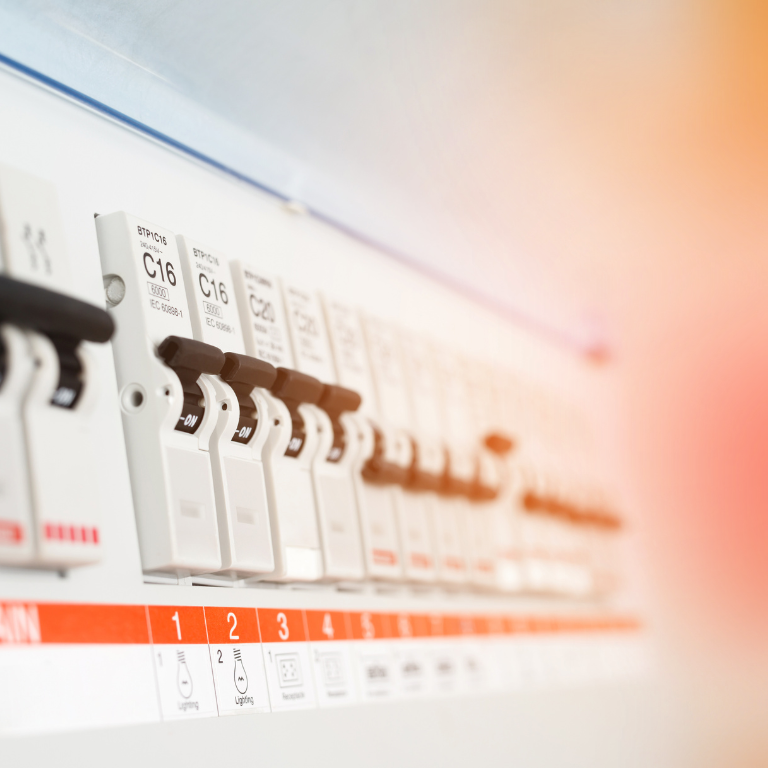The cannabis industry is booming, with growers and manufacturers pushing the limits of technology and innovation to meet increasing demand. However, as cannabis cultivation and processing operations expand, so too do the risks, especially when it comes to electrical safety. Electrical systems are critical to the success of cannabis facilities, from powering high-intensity lighting in grow operations to running sophisticated extraction equipment in processing plants. Unfortunately, without proper attention to electrical safety, these systems can pose serious hazards, including fires, electrical shocks, and equipment failures.
This article delves into the shocking facts about electrical safety in the cannabis industry, highlights key risks, and offers essential tips for ensuring safe operations.
Why Electrical Safety Is Critical in Cannabis Operations
Electrical safety is vital in any industry, but in cannabis, it takes on a heightened importance due to the unique conditions within cultivation and processing facilities. These operations often require large amounts of power to operate lighting systems, HVAC units, and machinery for processing cannabis products. Additionally, the high humidity levels in grow rooms and the volatile substances used in extraction processes increase the potential for electrical accidents.
Failure to adhere to proper electrical safety standards can result in catastrophic consequences, including:
Fires: Overloaded circuits or faulty wiring can lead to electrical fires, which can spread rapidly in facilities filled with combustible materials.
Electrical Shock: Workers are at risk of electrical shocks when systems are improperly installed or maintained, especially in wet environments like grow rooms.
Equipment Damage: Power surges or improperly grounded equipment can result in costly damage to critical systems, disrupting operations.
Ensuring electrical safety in cannabis facilities is not only a matter of compliance with safety regulations but also a critical factor in preventing injuries, property damage, and financial losses.
Common Electrical Hazards in Cannabis Facilities
Understanding the specific electrical hazards in cannabis operations is the first step in creating a safer working environment. Below are some of the most common electrical risks faced by cannabis growers and processors:
Overloaded Electrical Circuits
Cannabis cultivation requires significant amounts of energy, particularly for lighting systems that mimic natural sunlight. High-intensity discharge (HID) and LED grow lights consume a lot of power, and when combined with ventilation systems, climate control, and other equipment, they can overload electrical circuits. Overloaded circuits can overheat and lead to electrical fires, which can be devastating in cannabis facilities packed with flammable materials.
Poorly Installed or Faulty Wiring
Improper electrical wiring is a leading cause of electrical hazards in the cannabis industry. Some cannabis operators, eager to get facilities up and running quickly, may overlook the importance of hiring qualified electricians to install and maintain electrical systems. This can lead to the use of substandard wiring or inadequate connections, both of which increase the risk of short circuits and fires.
Wet Conditions and Electrical Equipment
In cannabis grow rooms, high humidity levels are a constant factor. Water and electricity are a dangerous combination, and the presence of moisture in grow rooms can increase the likelihood of electrical shocks. Without proper insulation, grounding, and waterproofing, electrical equipment in these environments can become a major hazard.
Improper Grounding
Grounding is essential for the safe operation of electrical systems, as it provides a path for electricity to safely disperse in the event of a short circuit. Inadequate grounding can lead to electrical shocks or fires. Cannabis operations that use heavy machinery and high-powered lighting systems must ensure that all equipment is properly grounded to reduce these risks.
Flammable Substances in Extraction Processes
Cannabis extraction, especially when using methods like butane or ethanol extraction, involves highly flammable substances. Electrical equipment used in extraction facilities must be explosion-proof and designed for use in hazardous environments. Any sparks or electrical malfunctions could ignite flammable vapors, resulting in dangerous explosions or fires.
Essential Electrical Safety Tips for Cannabis Operations
To protect employees and facilities from electrical hazards, cannabis operators must implement strict safety protocols and ensure that all electrical systems are up to code. Below are some essential tips for maintaining electrical safety in cannabis cultivation and processing operations:
Hire Licensed Electricians for Installation and Maintenance
When setting up or upgrading a cannabis facility, it’s crucial to work with licensed electricians who are familiar with the unique requirements of industrial electrical systems. These professionals can ensure that all wiring, circuits, and equipment are installed according to local electrical codes and safety standards. Regular maintenance should also be scheduled to check for any signs of wear or damage that could lead to electrical hazards.
Use Ground Fault Circuit Interrupters (GFCIs)
In areas where water or moisture is present, such as grow rooms or areas where plants are irrigated, it’s essential to install Ground Fault Circuit Interrupters (GFCIs). GFCIs are designed to cut off electrical power if a ground fault occurs, which can prevent electrical shocks. These devices are particularly important in wet or damp environments, reducing the risk of serious injury.
Properly Size Electrical Panels and Circuits
Overloading electrical panels and circuits is a common issue in cannabis facilities, given the power demands of lighting and HVAC systems. To prevent this, ensure that electrical panels are properly sized to handle the load required for the facility’s operations. Each circuit should be designed to support the equipment it serves without exceeding its capacity. Periodic inspections can help identify potential overloads before they cause serious problems.
Ensure Proper Grounding for All Equipment
Proper grounding is one of the most important aspects of electrical safety in cannabis operations. Every piece of electrical equipment, from lights to extraction machines, should be correctly grounded to prevent electrical shocks and reduce the risk of fires. Regular inspections should be conducted to verify that grounding systems are intact and functioning as intended.
Use Explosion-Proof Equipment in Hazardous Areas
Cannabis extraction involves the use of volatile solvents, making explosion-proof equipment an absolute necessity. All electrical components in areas where flammable substances are present should meet the National Electrical Code (NEC) standards for hazardous locations. This includes using explosion-proof lighting, outlets, and switches to prevent accidental ignitions.
Train Employees on Electrical Safety
Employee training is essential for preventing accidents and ensuring that workers understand the risks associated with electrical systems. All employees should receive training on the safe use of electrical equipment, recognizing potential hazards, and responding to electrical emergencies. They should also be trained on the proper use of personal protective equipment (PPE), including rubber gloves, insulated tools, and safety footwear.
Regularly Inspect and Maintain Electrical Systems
Routine inspections are key to identifying potential issues before they become serious hazards. Electrical systems should be inspected regularly for signs of wear, corrosion, or damage. Maintenance schedules should be followed diligently, with repairs or upgrades performed promptly to prevent accidents.
Regulatory Compliance and Electrical Safety Standards
To operate legally and safely, cannabis businesses must comply with local, state, and federal regulations regarding electrical systems and safety. The National Fire Protection Association (NFPA) and the Occupational Safety and Health Administration (OSHA) have specific guidelines for electrical safety in industrial settings, many of which apply to cannabis facilities. Compliance with these standards is not only essential for avoiding penalties but also for ensuring the safety of workers and the facility.
Cannabis operators should also familiarize themselves with the National Electrical Code (NEC), which sets the standards for safe electrical design, installation, and inspection in the United States. Adhering to NEC guidelines is critical for minimizing electrical hazards and maintaining safe operations.
Prioritizing Electrical Safety in Cannabis Facilities
Electrical safety should be a top priority for all cannabis operators, given the power-intensive nature of the industry and the potential hazards involved. By understanding common electrical risks, implementing proper safety measures, and staying compliant with regulations, cannabis businesses can protect their employees, facilities, and investments.
Electrical accidents in cannabis facilities can have devastating consequences, but with the right precautions, operators can create a safer environment that supports the growth and sustainability of the business. Staying proactive about electrical safety not only ensures compliance but also fosters a culture of safety that benefits everyone involved in the cannabis industry.













